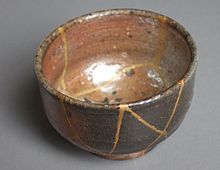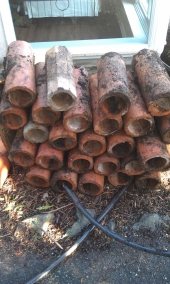
 6
6
















"You must be the change you want to see in the world." "First they ignore you, then they laugh at you, then they fight you, then you win." --Mahatma Gandhi
"Preach the Gospel always, and if necessary, use words." --Francis of Assisi.
"Family farms work when the whole family works the farm." -- Adam Klaus











 2
2




"You must be the change you want to see in the world." "First they ignore you, then they laugh at you, then they fight you, then you win." --Mahatma Gandhi
"Preach the Gospel always, and if necessary, use words." --Francis of Assisi.
"Family farms work when the whole family works the farm." -- Adam Klaus
 3
3




 3
3




 1
1




jennifer piddington wrote:i started a ceramic midden alongside the trail down to the stream. exhale, toss the broken bits onto the pile and move on.
"We're all just walking each other home." -Ram Dass
"Be a lamp, or a lifeboat, or a ladder."-Rumi
"It's all one song!" -Neil Young
 1
1











 4
4








David Miller wrote:I get this question all the time at my ceramics studio and the answer is always either give up on it or call Sotheby's. If you're willing to pay 100's of dollars for ceramic repair on the clay level then go for it, otherwise accept the FACT that once broken, a ceramic body will never be healed into as strong and foodsafe a manner as its condition was.







 4
4




Country oriented nerd with primary interests in alternate energy in particular solar. Dabble in gardening, trees, cob, soil building and a host of others.
 2
2









My tree nursery: https://mountaintimefarm.com/
 2
2




One of the things I learned lately is that clay is a finite resource. This is what I've heard anyway, and it seems correct.




 2
2












 1
1




Abe Coley wrote:i've had decent luck lightly taping the pieces together with scotch tape and the boiling the thing in milk for 10-15 mins. Brush milk onto the broken faces first before you tape them together. Let cool and dry and then pry off the tape.
Kept my favorite coffee mug alive this way for years before i finally shattered the thing into too many pieces to be salvageable.
Works at a residential alternative high school in the Himalayas SECMOL.org . "Back home" is Cape Cod, E Coast USA.
 6
6








A human being should be able to change a diaper, plan an invasion, butcher a hog, conn a ship, design a building, write a sonnet, balance accounts, build a wall, set a bone, comfort the dying, take orders, give orders, cooperate, act alone, solve equations, analyze a new problem, pitch manure, program a computer, cook a tasty meal, fight efficiently, die gallantly. Specialization is for insects.
-Robert A. Heinlein
 6
6




 2
2




Edwin Snell wrote:http://hatoya-f.com/simple-kintsugi/for-kintsugi-beginner/

here's a how to for beginners.
please use google translate!
or ask a friend who can 日本語できる!
lol
 3
3















Terry Byrne wrote:
Edwin Snell wrote:http://hatoya-f.com/simple-kintsugi/for-kintsugi-beginner/

日本語できる!
I can only read hiragana and katakana. And that is getting rusty. Context shore does help fill in the blanks. Which even helps in filling in the blanks so as to be able to read many Kanji.
 2
2




 4
4




Am I scavenger-hunting right?
 4
4




Lorinne Anderson: Specializing in sick, injured, orphaned and problem wildlife for over 20 years.




 2
2





|
Ew. You guys are ugly with a capital UG. Here, maybe this tiny ad can help:
Announcing The World's Largest Collection of 16,000 Woodworking Plans
https://woodworking-plans
|








